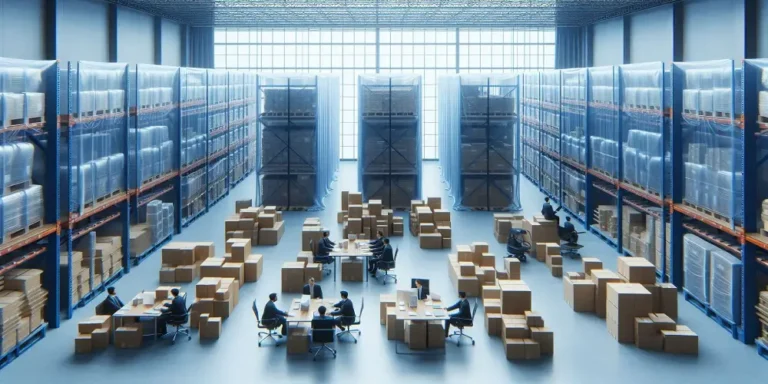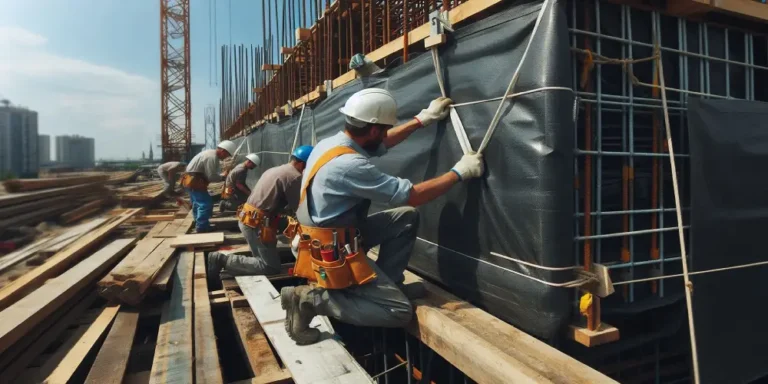Innovative Tarpaulin Solutions for Construction & Agriculture
Explore innovative tarpaulin solutions for construction and agriculture. Learn about the latest trends, benefits, and cost-effective uses.
Introduction
Tarpaulins, or tarps, may seem like simple, everyday items, but their role across industries has become increasingly critical. From construction sites to farms, tarpaulins offer versatile, durable, and cost-effective solutions for covering, protecting, and storing essential assets. With the advent of new tarpaulin technology advancements, businesses now have access to tarps that are stronger, longer-lasting, and more adaptable than ever.
In this post, we will explore innovative tarpaulin solutions and their practical applications across various industries, with a focus on construction and agriculture. We’ll also dive into tarpaulin industry trends, benefits for businesses, and how choosing the right tarpaulin can save costs and enhance productivity.
1. Tarpaulin Uses in Construction: Versatile and Essential
In the construction industry, tarpaulins play a crucial role in ensuring the smooth operation of projects, especially when unpredictable weather conditions arise. Their primary purpose is to provide protection—whether it’s safeguarding materials from rain, covering unfinished buildings, or creating temporary work zones.
Key Applications of Tarpaulins in Construction:
- Weather Protection: Tarps act as protective shields, covering machinery, building materials, and work zones from rain, wind, and dust.
- Safety Barriers: Tarpaulins are often used to create secure areas by cordoning off hazardous zones or as temporary fencing.
- Debris Containment: For projects in urban areas, tarpaulins help prevent dust, debris, or hazardous materials from affecting surrounding areas.
In addition to providing protection, tarpaulins can be custom-sized and reinforced with UV protection, making them highly adaptable to both large-scale construction projects and smaller, specialized tasks.

2. Tarpaulin Applications in Agriculture: Protecting Crops and Equipment
For agriculture, tarpaulins are just as important. Farmers rely on them to cover and protect crops, machinery, and livestock. Whether it’s shielding produce from the elements or creating makeshift storage solutions, tarpaulins offer unparalleled flexibility on farms.
Common Tarpaulin Applications in Agriculture:
- Crop Protection: Tarps cover and protect crops from unpredictable weather, such as heavy rain or excessive sunlight, preserving both quality and yield.
- Machinery Coverage: Farm equipment is often stored outdoors, making tarps essential for protecting machinery from damage caused by rain, wind, and sun exposure.
- Animal Shelters: Tarpaulins can be used to create temporary or emergency shelters for livestock during storms or extreme weather events.
Modern agricultural tarps are also engineered to resist wear and tear, offering solutions that are both long-lasting and affordable.

3. Innovative Tarpaulin Solutions: Pushing the Limits of Durability
With advancements in tarpaulin technology, today’s tarps are not just about covering or protection—they’re built to last longer and perform better. From UV-resistant and waterproof tarps to fire-retardant options, these innovations are helping businesses operate more efficiently while reducing costs.
Why Choose Innovative Tarpaulin Solutions?
- Increased Durability: New materials, like polyethylene and PVC, offer improved resistance to tearing, punctures, and weathering.
- Enhanced Strength: These tarps are reinforced with stronger threads or coatings, making them capable of withstanding extreme conditions.
- Specialized Coatings: Modern tarps come with features like UV protection, waterproof coatings, and fire resistance, making them ideal for specific industrial applications.
Businesses looking for reliable, cost-effective tarpaulin uses can take advantage of these advancements to meet their unique needs.

4. Benefits of Tarpaulins for Businesses: Cost-Effective Solutions
One of the greatest advantages of tarpaulins is their cost-effectiveness. Compared to more permanent or expensive solutions, tarps offer flexibility without compromising protection.
Business Benefits of Tarpaulins:
- Affordable Protection: Tarpaulins provide excellent coverage at a fraction of the cost of building permanent structures or shelters.
- Multi-Purpose Use: Businesses in various industries—from construction to agriculture—use tarpaulins for protection, storage, and transportation needs.
- Long-Lasting Investment: High-quality tarpaulins, if maintained properly, can last for several years, providing ongoing protection for a minimal initial investment.
In addition to their cost-effective uses, tarps are also easy to store, making them ideal for seasonal applications where they can be folded and kept out of the way when not needed.

5. Tarpaulin Safety Measures: Ensuring Proper Use
While tarpaulins are highly useful, ensuring proper installation and safety measures is essential. Failing to secure a tarp correctly or using it for purposes it wasn’t designed for can lead to accidents or damage.
Important Tarpaulin Safety Measures:
- Secure Installation: Always ensure tarps are tightly fastened, particularly in windy or stormy conditions.
- Load-Bearing Capacity: Use tarpaulins that are designed to withstand the weight and environmental conditions of the specific task.
- Routine Inspections: Regularly check tarpaulins for signs of wear and tear, especially after heavy use or exposure to harsh weather.
By following these safety practices, businesses can avoid potential accidents and get the most out of their tarpaulin investments.

6. Tarpaulin Storage Solutions: Prolonging Lifespan
Proper tarpaulin storage is key to maintaining the longevity of your tarp. After use, cleaning and correctly storing a tarp can prevent damage from mold, mildew, or material breakdown.
Tips for Storing Tarpaulins:
- Clean Before Storage: Always clean tarpaulins before storing them to remove dirt, debris, or moisture that can cause mold or deterioration.
- Drying: Ensure the tarp is fully dry to prevent mold or mildew from forming.
- Fold Properly: Neatly fold the tarp and store it in a dry, cool space to maintain its shape and material integrity.
By taking care of your tarps, they can be reused for years, reducing the need for frequent replacements.

7. Tarpaulin Industry Trends: Looking to the Future
The tarpaulin industry continues to evolve, with several key trends emerging. From eco-friendly materials to high-tech innovations, these trends are set to shape the future of tarpaulin manufacturing and use.
Key Tarpaulin Industry Trends:
- Sustainable Materials: Manufacturers are increasingly focusing on tarpaulins made from recycled or biodegradable materials, meeting the demand for more eco-friendly options.
- Smart Tarpaulins: Some businesses are experimenting with tarps that incorporate sensors to monitor conditions like temperature, pressure, or tension in real-time.
- Customization: Tailored tarpaulin solutions are becoming more popular, allowing businesses to get products that meet their exact specifications and needs.
These trends highlight the growing role of tarpaulin technology advancements and suggest a future where tarps will continue to provide solutions for an even wider range of applications.
Conclusion
From construction to agriculture, tarpaulins have proven themselves to be indispensable tools. The innovative solutions available today make tarps more versatile, durable, and cost-effective than ever before. Whether you need to protect equipment, cover crops, or create temporary shelters, the right tarpaulin can make all the difference.
As businesses continue to evolve and adapt to changing conditions, investing in high-quality tarpaulin solutions is a smart choice that offers long-term benefits. With advancements in tarpaulin technology and industry trends pointing towards sustainability and customization, the future of tarps looks brighter than ever.
Looking for reliable tarpaulins for your business? Contact us today to explore our range of high-quality, innovative tarpaulin solutions tailored to meet your industry needs.


